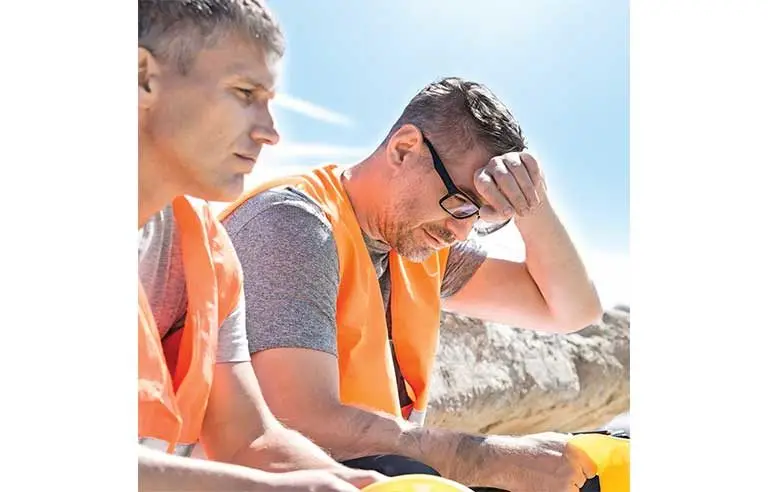How can safety software help us prepare for summertime heat?

Responding is Eric Vittardi, regional sales manager, SafetyHQ, Strongsville, OH.
During the summer months, heat is a significant safety concern. According to OSHA, citing data from the Bureau of Labor Statistics, the construction industry experienced an average of 33 environmental heat-related deaths a year from 1992 to 2021. Having a plan in place to mitigate risks associated with summertime heat is crucial.
One common way contractors plan for high temperatures is by using construction safety software, which can create, track and communicate key heat safety objectives.
More specifically, construction safety software distributes relevant information about working in the heat. Sharing toolbox talks is one popular way employers keep their crew informed. Most safety software offers prebuilt libraries of these relevant, topical discussions. For example, one well-used toolbox talk is entitled, “The Signs of Heat Exhaustion and Heat Stroke.” This talk instructs workers to react quicker to symptoms such as dizziness, nausea and confusion, and to get immediate medical attention. After only a few minutes of reading or listening, team members know what to look for and how to proceed.
Contractors can also use safety software to track when their employees complete toolbox talks and make the trainings a requirement before entering a jobsite. The benefits of this are twofold: workers are trained and contractors maintain a peace of mind knowing that everyone is aware of the risks associated with working in high heat.
Additionally, construction safety software can be used to create inspection checklists. Areas of concern – and how to mitigate them – are outlined in the form of a jobsite hazard analysis to help lower risks by establishing actionable steps, such as implementing regular breaks to hydrate in shaded areas during the hottest times of the day.
These JHAs are adjustable at a moment’s notice as project demands change. Alerts can be sent out to workers if they need to modify their work schedule. This results in fewer blind spots to heat risks throughout the project because they can be identified, addressed and communicated with workers immediately.
Once safety guidelines are communicated, construction safety software can track compliance, giving contractors visibility into their crews’ behavior. If workers stray from established safety procedures, documentation can be sent with corrective actions.
If a heat-related incident occurs, contractors can date them, assign a cause and create a plan to address concerns immediately. This real-time incident tracking enables contractors to see the effect of their current safety program on heat-related risks and modify it as needed, creating a comprehensive safety program that addresses all circumstances related to high heat.
Creating a plan to mitigate safety concerns related to heat can seem like a daunting task. But by leveraging construction safety software, contractors can better prepare for challenges posed by high temperatures and prioritize the health and safety of their workers on the jobsite.
Editor’s note: This article represents the independent views of the author and should not be considered a National Safety Council endorsement.
McCraren Compliance offers many opportunities in safety training to help circumvent accidents. Please take a moment to visit our calendar of classes to see what we can do to help your safety measures from training to consulting.
Original article published by Safety+Health an NSC publication


